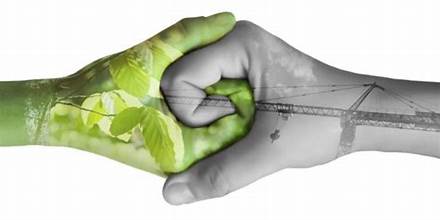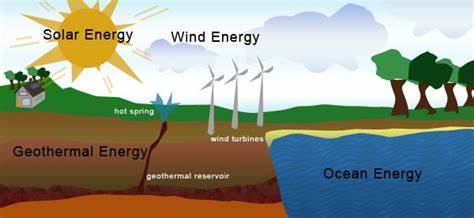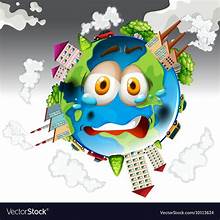OUR ENVIRONMENT
Our environment refers to the sum total of all living and non-living factors that surround us, including the natural and built elements of the world in which we live. It encompasses everything from the air we breathe, the water we drink, the land we inhabit, the plants and animals we share it with, to the human-made structures and technologies we create.

Key components of our environment include:
-
Natural Environment:
Air: The atmosphere and its composition of gases, crucial for life and climate regulation.
Water: Oceans, rivers, lakes, and groundwater that support various ecosystems and life forms.
Land: The surface of the Earth, including soil, terrain, and landscapes that provide habitats and resources.
-
Biodiversity and Ecosystems:
Various species of plants, animals, microorganisms, and the ecosystems they form.
Ecosystems such as forests, grasslands, wetlands, deserts, and coral reefs, which support diverse life forms and play critical roles in ecological balance.
Human Environment:
Built Environment: Cities, towns, infrastructure, buildings, and transportation systems constructed by humans.
Cultural Environment: Languages, traditions, customs, and societal values that shape human interactions and perspectives.
-
Environmental Issues and Challenges:
Climate Change: Global warming, extreme weather events, and changes in weather patterns due to human activities like burning fossil fuels and deforestation.
Pollution: Air, water, and soil pollution caused by industrial activities, agriculture, and improper waste disposal.
Loss of Biodiversity: Habitat destruction, overexploitation of resources, and introduction of invasive species leading to the decline of various species.
Natural Resource Depletion: Overuse and depletion of natural resources like minerals, fossil fuels, and fresh water.
Waste Management: Inadequate waste disposal and recycling practices leading to environmental harm.
-
Sustainability and Conservation Efforts:
Sustainable Development: Balancing economic growth with social equity and environmental protection to meet present needs without compromising future generations.
Conservation: Protecting and preserving natural resources, biodiversity, and ecosystems through various strategies, laws, and initiatives.
Addressing environmental challenges and promoting sustainability requires collective efforts from individuals, communities, governments, and international organizations. Sustainable practices, responsible resource management, conservation, and raising awareness about environmental issues are vital for a healthier and more sustainable future.


